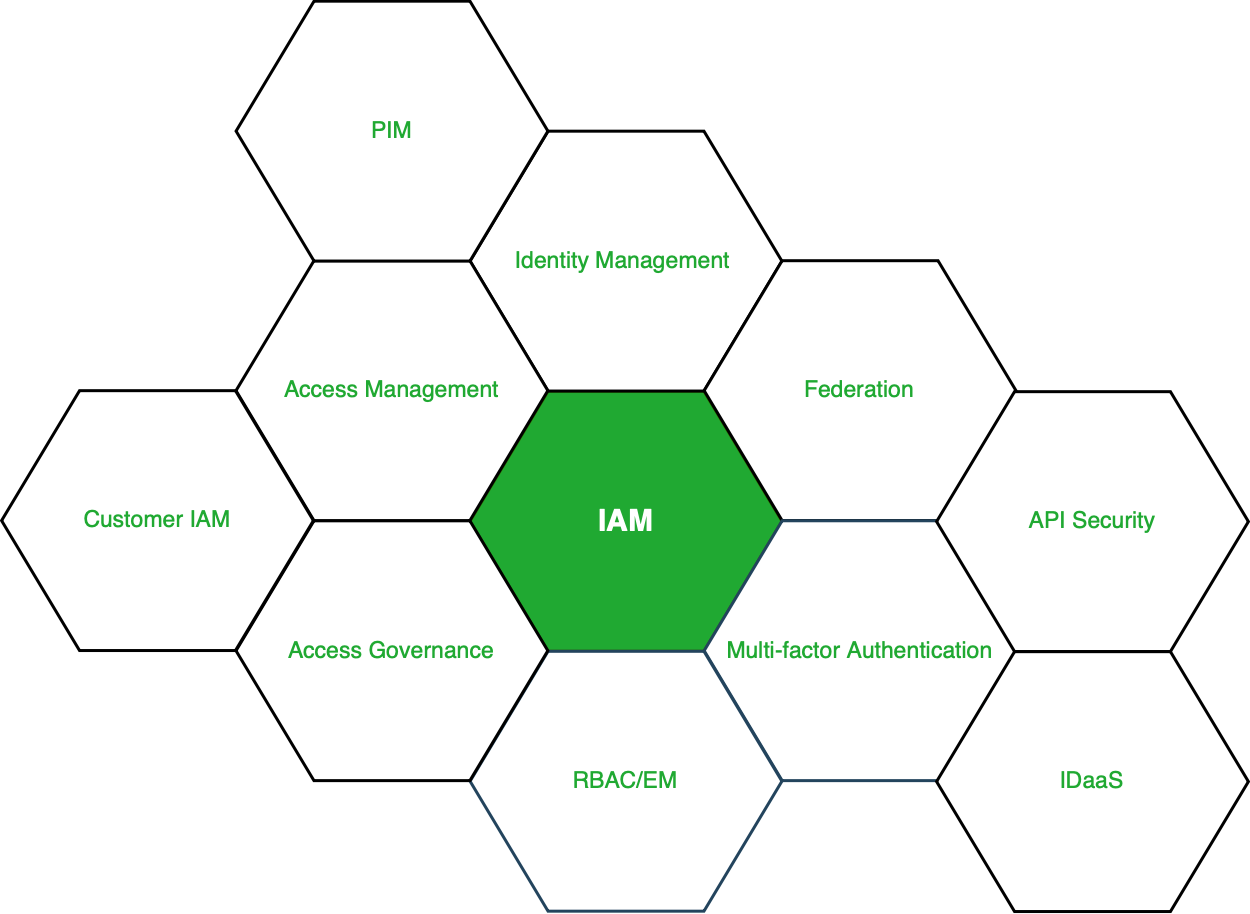The security discipline IAM (Identity & Access Management) enables the appropriate people to access the right resources at the proper times and for relevant purposes. These resources include the equipment needed to finish a task, access to a database containing vital information, or cloud-based services and programs. There is a clear distinction between identity management and access management, even though IAM covers many solutions. By checking the information provided during the access request against an identity management database, identity management aims to verify that a user who requests access is who they claim to be. On the other hand, access management uses identity information about users to determine which resources they can access and what operations they can perform on those resources. There are some essential components to consider regarding Identity & Access Management. Some of the key ones are authentication, authorisation, and Meta-directory. The latter two are critical because they are a great way to ensure that you can secure a wide variety of systems.
Authentication
Table of Contents
A framework called Identity and Access Management (IAM) is used to manage and upkeep users’ digital identities. It provides organizations with a way to ensure that their employees can access the information they need at the right time. This can help them reduce the risk of an attack and improve their security posture.
IAM systems are designed to provide a simple, seamless experience. They also offer an integrated security framework that helps security teams identify and navigate risks. These solutions allow organizations to protect data centers, protect integrations, and streamline user workflows.
The first step in implementing an identity and access management solution is determining the organization’s needs. Each system has its own set of requirements. However, there are a few standard components.
The process of establishing a user’s identity is called authentication. By entering their username and password, a user can verify their identity. One-time codes and biometrics are some additional techniques. In addition, a multifactor authentication (MFA) process adds extra verification steps to the authentication process. The identity governance and administration tools, which is a component of Identity and Access Management, give organizations greater visibility into users’ identities and access rights so they can better control who has access to what systems and when. Identity governance enables organizations to scale for growth, do more with less, improve their security posture, and satisfy escalating auditor demands.
Authorization
Identity and access management (IAM) is vital to help security teams navigate cyber-attack risks. It allows security teams to control access to sensitive data.
IAM is a framework of policies, techniques, and technologies that manages digital identities. An IAM system helps to identify, validate, and authorize users. In addition, it helps to protect data centers, integrations, and development platforms.
IAM is a discipline that is growing in importance and complexity. Companies now share digital resources with more people. They must grant access to only the right people for specific tasks. This is especially true when employees work from different locations. Access determination is more difficult if employees are working on mobile devices.
IAM systems are designed to make a user’s experience simple and seamless. For example, some IAM solutions implement single sign-on. Single sign-on can eliminate the need for re-authentication for each resource.
Another common IAM component is authentication. Authentication can involve the use of a password or something the user has. Standard authentication methods include username and password, biometrics, and one-time codes sent by SMS.
Single Sign-on (SSO)
Single sign-on (SSO) is a feature of federated identity management that allows users to access multiple applications with a single username and password. It simplifies authentication, reduces the number of passwords, and eliminates password fatigue.
SSO is also a great way to comply with regulatory compliance audits. For example, to comply with HIPAA regulations, all medical research centers must keep an audit trail of all sensitive user data.
Single sign-on is a secure and convenient process that ensures only a select number of users have the necessary access. This process is usually based on a trust relationship between the user and the service provider.
Authentication tokens are essential to SSO. An authentication token is a small piece of digital information that confirms a user’s identity. These tokens are sent from the user’s browser to the service provider, who then validates the user’s credentials. The user can then use the token to access other websites and services.
Meta-Directory
The Meta-Directory is an essential component of identity and access management. It is used to unify directories and database entries from various external data repositories. This allows users to access consolidated identity information in LDAP format.
The Meta-Directory provides a view of all entries in an external data repository and controls the flow of changes. In addition, it allows only the members of a view to flow through the Meta-Directory. Moreover, this service also manages the flow of information between the Meta View and the external data source.
Meta-Directory is an integral part of enterprise identity and access management. It unifies directory and database entries and provides a consistent view of all directory databases. Moreover, it supports the integration of legacy systems into LDAP directories. As a result, it streamlines administration.
Typical business enterprises use a variety of directory systems. Advanced naming functions and standard technology are required for system integration. Also, it is essential to have sophisticated administration mechanisms.

